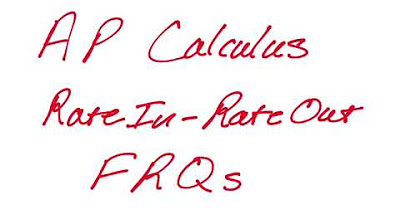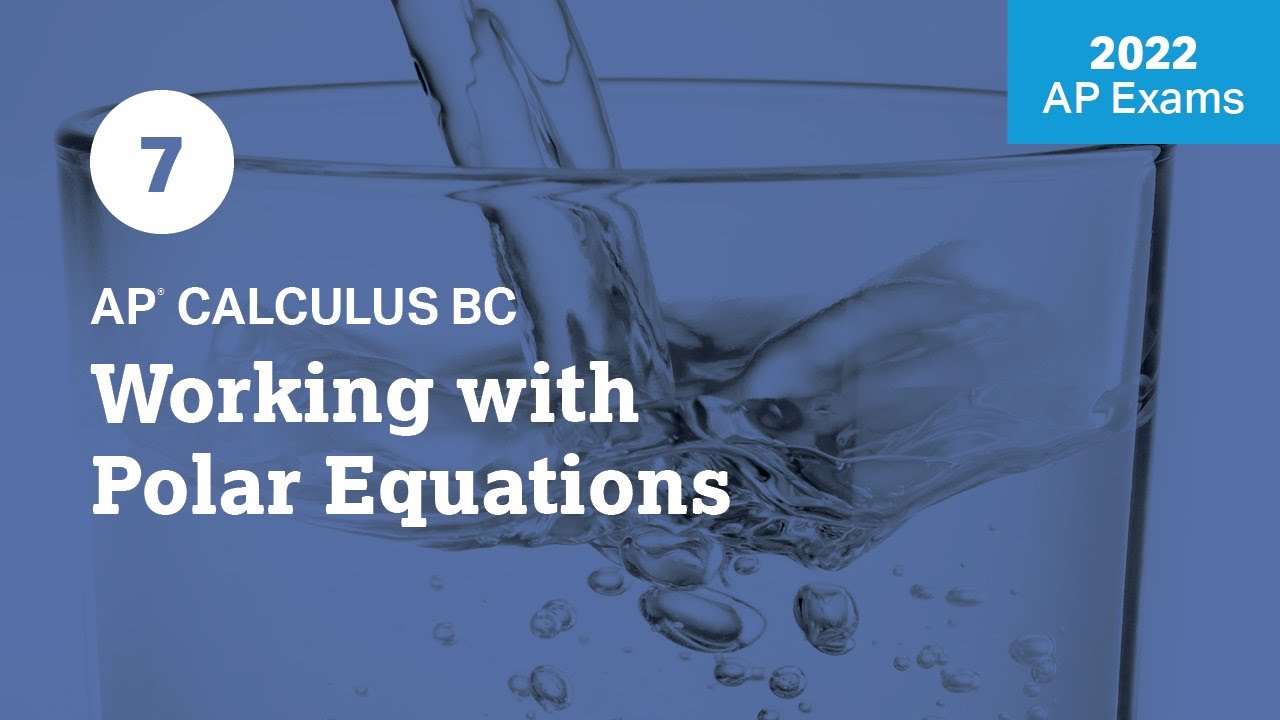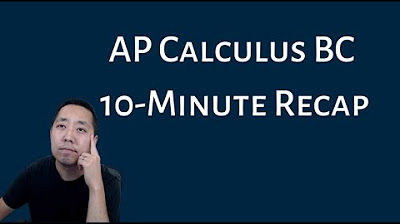AP Calculus BC: Exam Prep 2021 Polar Curves FRQ
TLDRThe video script is a study aid for students preparing for a test, focusing on calculus problems. The speaker emphasizes the importance of understanding three types of questions: graph analysis, rate accumulation, and related rates, which are common in calculus exams. Using examples from past exams, the speaker provides insights into how these questions are structured and offers strategies for solving them. The summary of the script includes a walkthrough of a polar coordinates problem, highlighting the need to calculate areas and average distances, and to understand the relationship between polar and linear coordinates. The speaker also touches on a limit problem involving the area inside a circle that grows larger with an increasing parameter. The aim is to equip students with the knowledge to tackle at least three out of four typical calculus problems, which can significantly contribute to their test scores.
Takeaways
- 📚 The speaker is addressing students preparing for a test, likely in calculus, and apologizes for the stress they might be under.
- 📝 The speaker predicts that three types of questions will be on the test: graph analysis, rate accumulation, and a polar or parametric question.
- 🔢 The speaker emphasizes the importance of understanding related rates and rate accumulation, offering help for those who may have forgotten.
- ⭕ The speaker provides a specific example from a 2019 test, focusing on a polar question and how to approach finding the area and average distance.
- 📈 The speaker explains how to calculate the area under a polar curve by integrating the squared radial function over the interval.
- 🎯 For the average distance, the speaker demonstrates using the average value theorem in calculus to find the integral over the given interval.
- 🤔 The speaker discusses a tricky part of the test where a line with slope 'm' divides a polar region into two equal areas without solving for 'm'.
- 🧮 The speaker connects polar coordinates with linear equations by using the tangent function to find the angle that bisects a region.
- 📉 The speaker outlines a limit problem involving the area inside both a polar curve and a circle that grows larger as 'k' increases.
- 🌟 The speaker predicts that the test will include a polar question, as it has been a recurring theme in previous years.
- 💡 The speaker encourages students to recognize patterns in the types of questions asked and to focus on understanding the concepts of area, average distance, and limits.
Q & A
What is the main topic discussed in the video?
-The main topic discussed in the video is a review and preparation for a calculus test, focusing on related rates, rate accumulation, graph analysis, and polar coordinates.
What type of calculus questions are expected to appear on the test?
-The expected calculus questions on the test include related rates, rate accumulation, graph analysis, and potentially a question involving polar coordinates or Taylor series.
What is a related rate question in calculus?
-A related rate question in calculus involves finding the rate of change of one quantity in relation to another, often involving differentiation and understanding how different variables are interconnected.
What is the significance of the 2019 and 2018 exam patterns mentioned in the video?
-The significance of the 2019 and 2018 exam patterns is to highlight the recurring themes and types of questions that have been asked in previous years, which may indicate the likelihood of similar questions appearing in the upcoming test.
What is the process for finding the area of a region in polar coordinates?
-To find the area of a region in polar coordinates, one would integrate one-half of the function r(theta) squared with respect to theta over the interval of interest.
How is the average distance from the origin calculated in the context of the video?
-The average distance from the origin is calculated as the integral from the interval limits of r(theta) with respect to theta divided by the difference of the interval limits.
What is the strategy for solving the problem involving a line through the origin with a positive slope that divides a region into two equal areas?
-The strategy involves expressing the slope in terms of tangent of theta and setting up an equation for equal areas without solving for the specific value of the slope (m), as per the instructions in the video.
What is a Taylor series in calculus?
-A Taylor series is a representation of a function as an infinite sum of terms calculated from the values of its derivatives at a single point.
Why is it important to recognize the pattern of questions in previous exams?
-Recognizing the pattern of questions helps students to focus their study efforts on areas that are more likely to be tested, potentially improving their performance on the exam.
How does the video suggest approaching the problem with a circle that encompasses a region as its radius increases?
-The video suggests finding the limit as the radius (k) approaches infinity and setting up an integral for the area of the region inside the circle without solving for a specific numerical value.
What does the video recommend for students who are preparing for the calculus test?
-The video recommends that students focus on understanding the types of questions that are likely to appear, such as related rates, rate accumulation, and graph analysis, and to practice problems that align with these topics.
What is the final piece of advice given to students in the video?
-The final piece of advice is to keep working hard, understand the types of questions that are typically asked, and to approach the exam with the knowledge that they can achieve a significant portion of the available points by focusing on key areas.
Outlines
📚 Exam Preparation and FRQ Overview
The speaker starts by acknowledging the stress students might be feeling due to an upcoming test and apologizes for any confusion. They then focus on the Free Response Questions (FRQs) for BC calculus, specifically mentioning that three questions will come from calculus AB. The speaker references a 2019 exam, highlighting a related rate question involving rates of change, which is a fundamental concept from calculus. They also mention rate accumulation and graph analysis, urging students to review these topics. The video aims to help students prepare for at least two types of questions: graph analysis and rate accumulation, with an emphasis on understanding the patterns from previous years' exams. The speaker provides a brief overview of what to expect in the exam, including a focus on polar coordinates and a reminder to understand the standard polar questions.
🔢 Solving Polar Coordinates and Average Distance
The speaker delves into solving problems related to polar coordinates, emphasizing the importance of squaring the polar equation when integrating. They provide a step-by-step guide for finding the area of a shaded region in polar coordinates and calculating the average distance from the origin, which is related to the average value in calculus. The speaker uses a calculator to demonstrate how to obtain numerical answers, rounding to three decimal places. They also discuss a problem involving a line through the origin with a positive slope that divides a region into two equal areas. The speaker connects the concept of slope in polar coordinates with the tangent function and provides a method to find the slope without solving an integral equation, as per the question's instructions.
🔴 Area Calculations and Limit Definitions
The speaker continues with a problem involving the area of a region inside both a circle and a polar curve. They explain how to find the limit of the area as a parameter 'k' approaches infinity, which involves integrating the polar equation over a specific interval. The speaker emphasizes understanding the geometric interpretation of the problem and the relationship between the circle's radius and the polar curve. They provide a general approach to solving the problem and mention the expected outcome when 'k' equals one, two, three, and so on. The speaker concludes by encouraging students to work hard and to understand the types of questions that are likely to be asked, such as area calculations and average distance problems, to prepare effectively for the exam.
Mindmap
Keywords
💡Related Rate
💡Rate Accumulation
💡Graph Analysis
💡Polar Coordinates
💡Taylor Series
💡Integral Calculus
💡Area Calculation
💡Average Distance
💡Slope of a Line
💡Limit of a Sequence
💡Riemann Sum
Highlights
The speaker is addressing students preparing for a test, likely in calculus, and apologizes for the stress they might be experiencing.
Emphasizes the importance of understanding related rate problems from Calculus AB for the BC test.
Mentions a 2019 exam question involving a related rate scenario with a fish tank.
Advises students to review rate accumulation problems, offering help through posted videos.
Predicts that students will encounter at least two questions from graph analysis and rate accumulation.
Discusses a peculiar related rate question from a past exam and encourages students to tackle it.
Talks about the inclusion of series questions, including divergence and convergence, and Taylor series.
Focuses on polar questions, noting a pattern in their appearance in past exams.
Provides insight into how to approach polar questions, including finding the area and average distance.
Explains the process of finding the area of a shaded region in polar coordinates using an integral.
Demonstrates how to calculate the average distance from the origin using an integral for a polar function.
Addresses a problem involving a line through the origin with a positive slope that divides a region into equal areas.
Discusses the connection between polar coordinates and linear equations, using the concept of slope.
Introduces a limit problem involving the area inside a circle that grows larger as a parameter increases.
Explains how to find the limit of an area as a parameter approaches infinity, using an integral over a quarter circle.
Encourages students to recognize patterns in exam questions and to understand the underlying concepts to solve problems.
Motivates students to aim for at least three out of four questions correct in the exam section, which can amount to a significant score.
The speaker concludes by urging students to keep working hard and hoping that the insights provided will be helpful for their exam preparation.
Transcripts
Browse More Related Video
5.0 / 5 (0 votes)
Thanks for rating:





